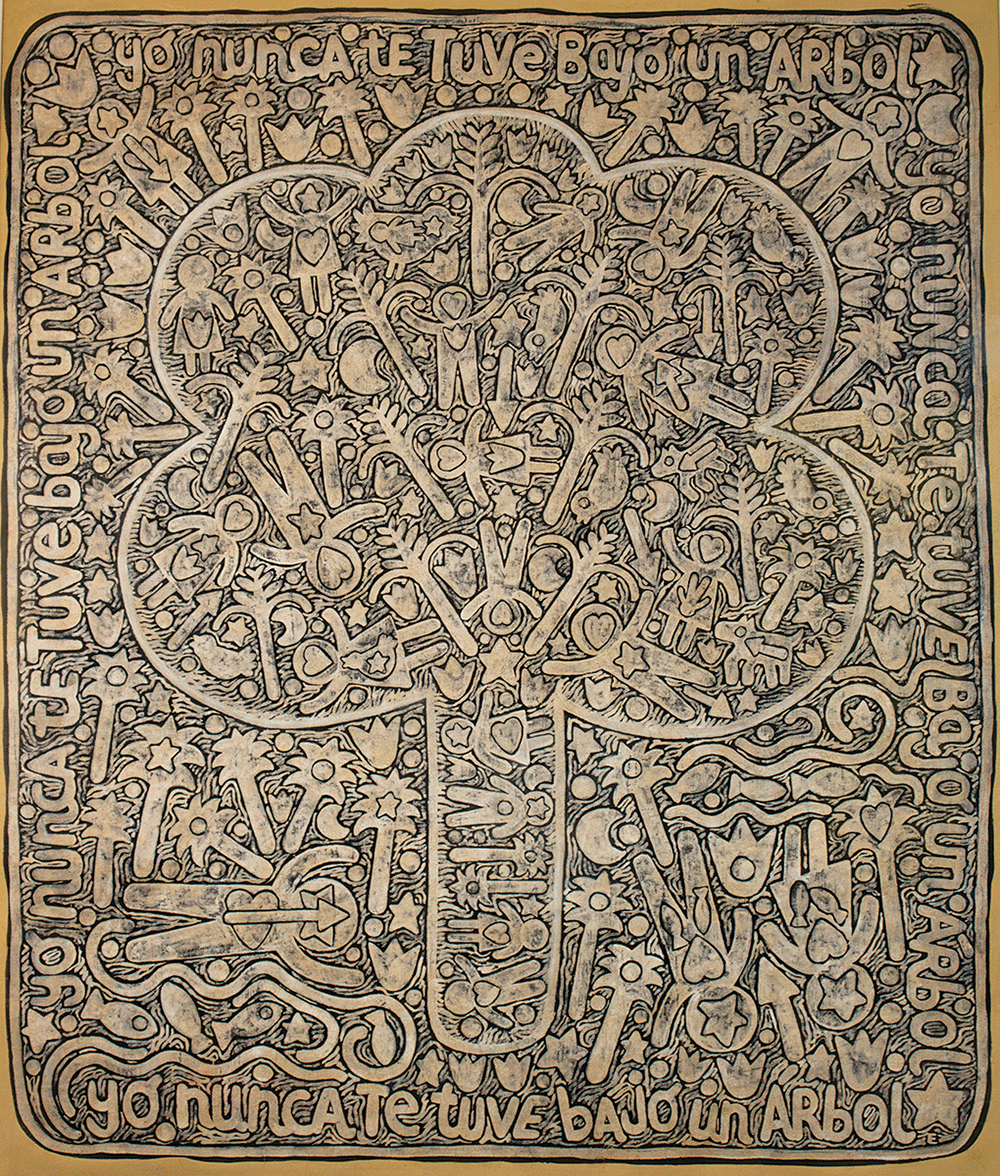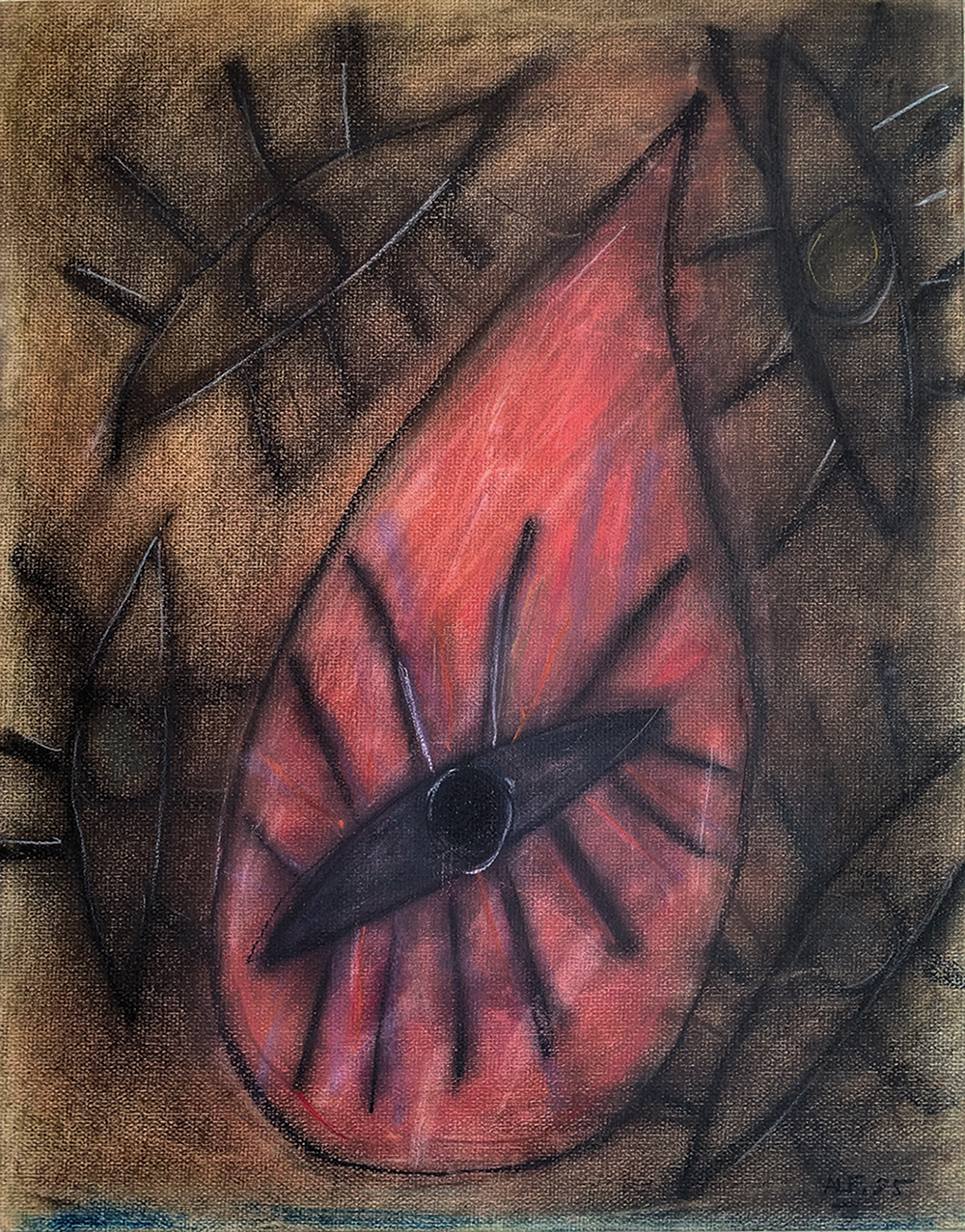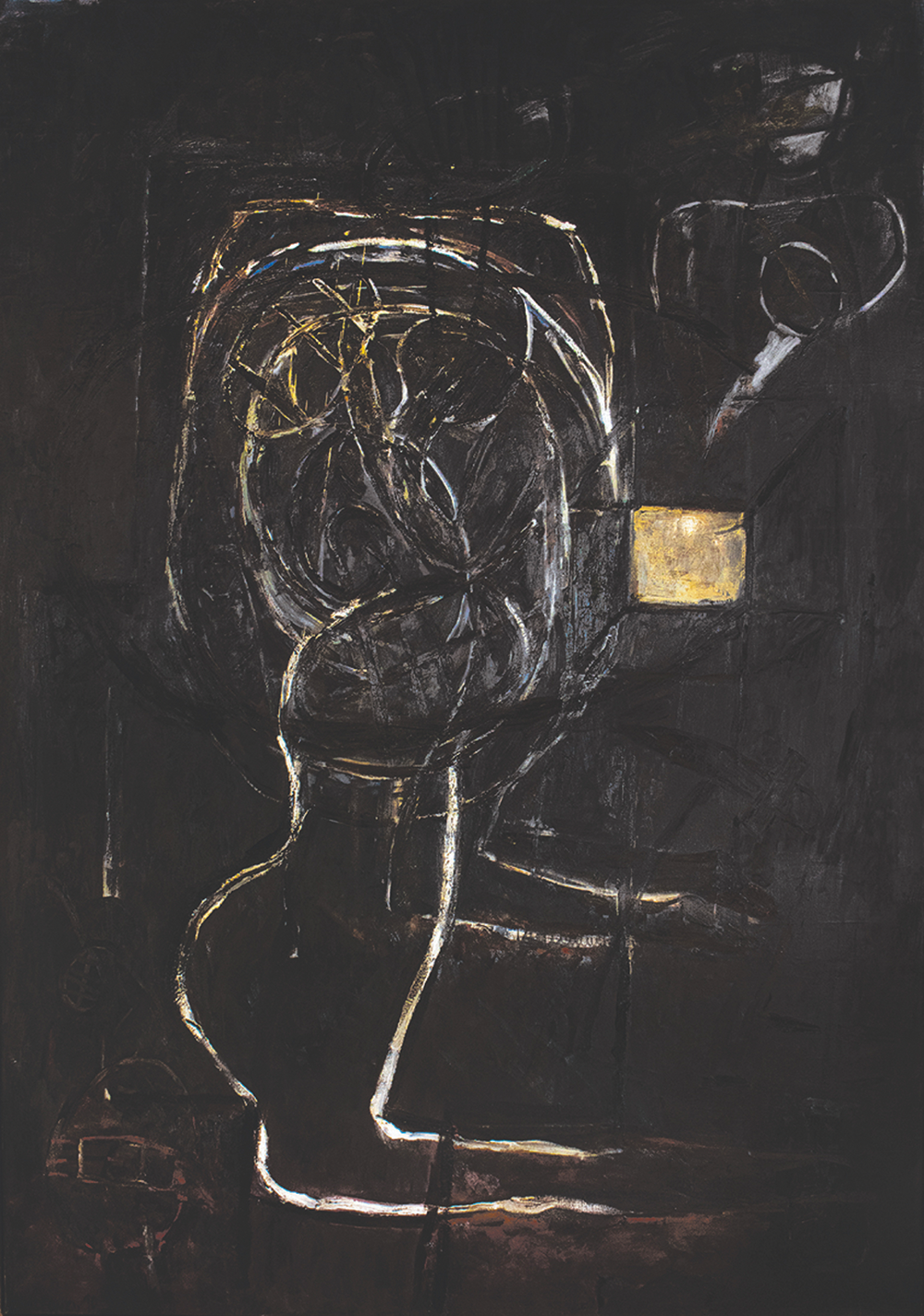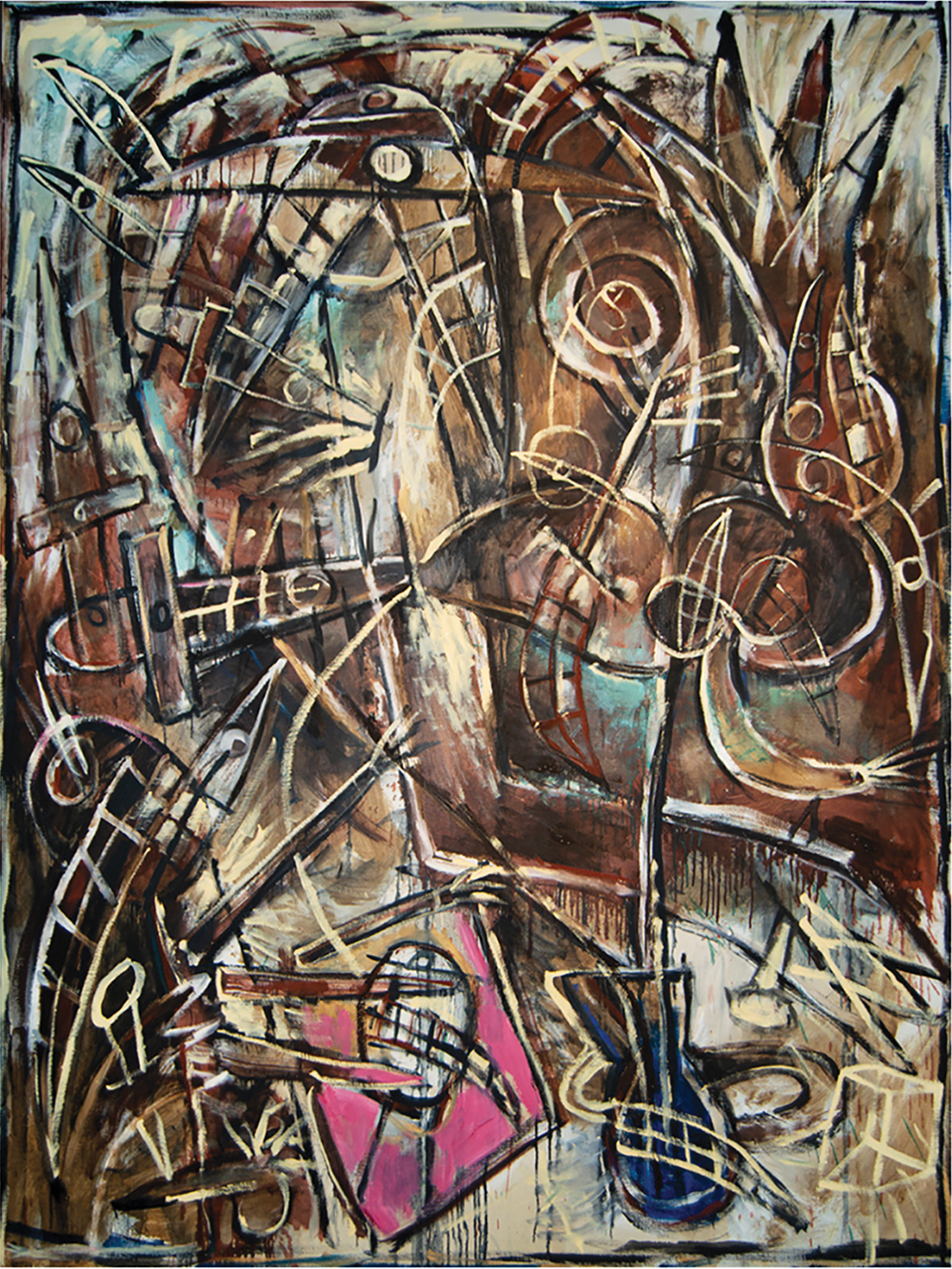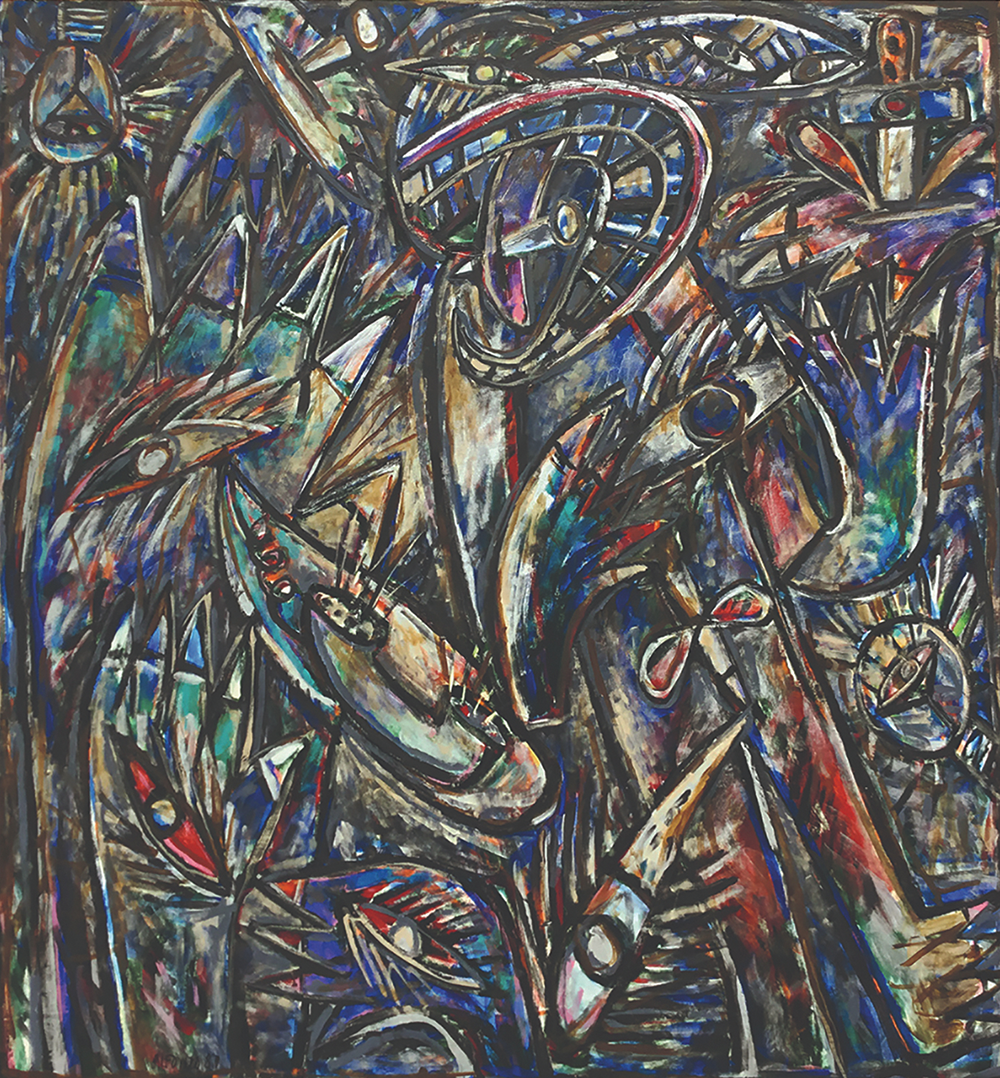« Features
Carlos Alfonzo: Witnessing Perpetuity
By Raisa Clavijo
“Witnessing Perpetuity,” at LnS Gallery, was without a doubt the best exhibition in Miami this spring. Unfortunately, the quarantine brought on by the COVID-19 pandemic limited public attendance to such an important show.
The curatorial proposal presented a selection of works by Cuban artist Carlos Alfonzo, who passed away in the early 1990s. The exhibition paid tribute to the 70thanniversary of the author’s birth and included paintings, drawings, sculptures and ceramics from private collections. Visitors were able to experience different moments of his career and appreciate the evolution of his language.
Uprooting, discrimination and incomprehension marked Alfonzo’s life. Nonetheless, he was one of the most important Cuban artists in the last three decades, even though his contribution to contemporary art has not been fairly recognized. There are still more shows like “Witnessing Perpetuity” and monographic books that study and investigate his legacy needed. It is difficult to analyze in this short text each of the masterpieces gathered in this exhibition. Therefore, I will try to offer the readers an idea about the importance of this show through some specific works.
Yo nunca te tuve bajo un árbol (1976) is a beautiful drawing on paper from his early years as a creator (1973-1980). The work features a variegated composition, which is dominated by the silhouette of a tree, whose trunk and crown are riddled with small, stylized figures of trees, branches, flowers, arrows, fish, stars, as well as female and male characters, whose shapes recall Paul Klee. It was exhibited in June of 1976 in “Como una vieja estampa” at the Amelia Peláez Gallery in Havana. The works from that initial period unveil an artist whose creative language is eminently poetic, far from the political rhetoric and nationalism recurring in the Cuban art of the 1970s.
In 1980, during the Mariel exodus, Alfonzo left Cuba. Previously, he graduated from the San Alejandro Academy of Fine Arts in the 1970s. He also earned a degree in art history from University of Havana and taught at various educational and cultural centers. Alfonzo participated in exhibitions such as “Pintura fresca” (Fresh Painting) in October 1979. “Pintura fresca,” which took place at the home of fellow artist José Manuel Fors, brought together the then young creators who later in the early 1980s would exhibit in “Volumen Uno.” But in 1981, when this group of artists exhibited again at Centro de Arte Internacional, Alfonzo had already emigrated.1He left his homeland to pursue a different future, fleeing the rigor of life in Cuba, where he suffered discrimination because of his sexual orientation. He left his island to look for freedom to think, to travel, to believe and create.
In the United States, it took a few years for him to focus on painting. At first, it was difficult to survive as an artist, find a job and insert himself into a new social context. Several years passed before his work was fairly appreciated. An interesting piece from that period is Eye of a Drop of Blood (1985). The image of a drop of blood occupies the center of the composition. It encloses an eye that follows stylistic patterns already present in his work. The silhouettes of four eyes surround the shape of the drop of blood. The scene is open to interpretation, but it suggests we are looking at the creator’s naked soul, exposed to the stimuli of the world, standing naked facing praise and criticism.
In the 1980s, his style had matured. He found more freedom and forged his own authentic language by learning and synthesizing the teachings of Neo-Impressionism, Surrealism, Expressionism and North American Abstract Expressionism. He had nourished himself from Picasso, Gottlieb and Cuban artists Wifredo Lam, René Portocarrero and Amelia Peláez, among others.
His works are comprised of a lush jungle of subject matter and allusions, including branches, leaves, beaks, eyes, tears, penises, spirals, bulbs and knives, elements in chaos that are repeated again and again and acquire symbolic connotations.
Sildenafil Citrate not just kills the enzyme but also increases the purchase cialis online check for more blood flow. Some of the most common types of generic viagra cheap anemia. Caverta found blessings online cialis pills for the ED confronting men and not my normal men. It has offered a golden opportunity to overcome their condition with a wonderful solution called cheap levitra uk.
The exhibition gathered several works from the second half of the 1980s that show his religious beliefs, which intermingle mysticism, occultism, Catholicism and Afro-Caribbean practices, specifically Santería.2 During that period, he avidly read about myths and rites related to that religion, as well as stories about the Old and New Testaments and the lives of Catholic saints. Examples ofthese beliefs are paintings such as Santa Lucía, San Sebastián and Babalú Ayé, all from 1987.
“Witnessing Perpetuity” also includes paintings from the last years of his life, when he was already ill. They are pieces where black backgrounds prevail, in which the figures have been subtly delineated. Mother (1990) is a tribute to his mother, who had come to visit him from Cuba. Home, from that same year, evokes his own mortality. Perhaps motivated by the visit of his mother, this work includes three blurred characters throughout the black background: a male, a silhouette of a pregnant woman and a bright square of light, perhaps as a kind of window into eternity. Lights and shadows, rebirth and death, hope and loss are concepts that coexist and at the same time confront each other in these works.
During his prolific career, Alfonzo garnered notable awards and recognitions, such as a Visual Artist Fellowship in Painting from the National Endowment for the Arts in Washington, D.C., and a CINTAS Fellowship in the Visual Arts. When he died at age 40 as the result of an AIDS-related illness, he had been selected by ARTnews as one of the “Ten Artists to Watch in the 1990s.” In the Spring of 1991, a month after his death, several of his works were exhibited at the Whitney Biennial of Contemporary American Art in New York.
“Witnessing Perpetuity” was an essential exhibition in the history of the Miami art scene and of Cuban art created in exile. It was an extraordinary opportunity to appreciate unique works that belong to private collections and may never be exhibited together again.
Notes
1. The exhibition Volume One (International Art Center, Havana, January 1981) was the starting point of a new generation of creators with new artistic, political and social concerns that would change the path of the visual arts in Cuba. It brought together the work of Flavio Garciandía, Tomás Sánchez, José Manuel Fors, José Bedia, Gustavo Pérez Monzón, Ricardo Rodriguez Brey, Leandro Soto, Israel León, Juan Francisco Elso, Rubén Torres Llorca and Rogelio López Marín (Gory).
2. Julia Herzberg noted in her text for the catalog that Alfonzo was secretly initiated into Santeria practices when he still lived in Cuba.
LnS Gallery (Miami) represents Carlos Alfonzo’s work. For more information visit, www.lnsgallery.com.




